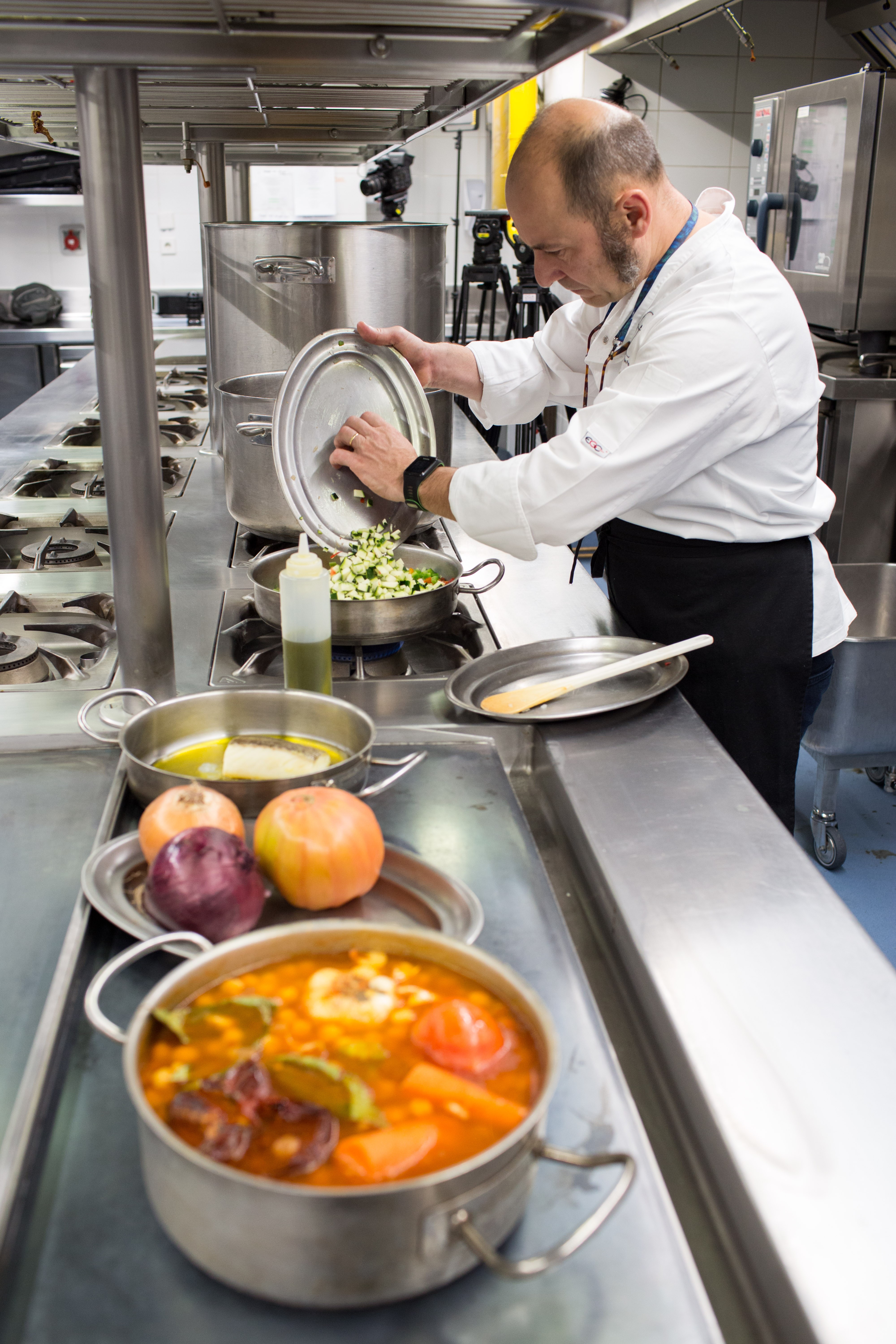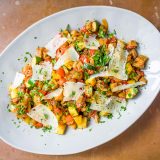On a recent trip to Madrid, I ended up cooking pisto—a Spanish version of ratatouille—at the Madrid dinner theater Florida Retiro with Joaquín Felipe, a trendsetting chef with a winning, soft-spoken personality. The kitchen was just a few steps from the indoor theater, which was empty on that particular morning, the silence of the cavernous space interrupted only by the sound of an employee shampooing the red carpet.
A glimpse of the previous night’s program indicated that Florida Retiro, located in the center of Madrid’s El Retiro park, was selling a form of Spanish vaudeville with jugglers, comedians and dancers, like “The Ed Sullivan Show” elevated with a dose of Latin charm.
In Felipe’s kitchen, a theme of contradiction emerged—one reinforced by Madrid itself, a bevy of soulless high-rise buildings interspersed with architectural gems, punctuated with the allure of small cafés and vermouth bars. I stood next to him in his spotless stainless-steel atelier as he demonstrated how to make one of the simplest dishes in the Spanish culinary repertoire.

He began with a bit of prep—thinly slicing garlic cloves, then standing a red pepper on end and slicing planks off the four sides, leaving the core intact. Then he was on to the cooking.
The vegetables were finely diced, including the eggplant, which was breaded using a special breading box—the excess crumbs falling through a mesh surface underneath—then briefly deep-fried to provide texture. The rest of the cooking was business as usual, all done in a skillet, with sautéed aromatics and slowly simmered vegetables.
A domed mound of this pisto, fragrant with olive oil and herbs, was offered for tasting. Felipe had successfully threaded the needle: The fresh taste of the vegetables came through, each ingredient still intact, with good, fruity olive oil as a binder.
At Milk Street, we chose zucchini, eggplants, onion, bell peppers, tomatoes and parsley, cutting the vegetables into small pieces, as Felipe did. We skipped any breading, but followed his lead by cooking the eggplant and zucchini separately.
Next up were the onion, peppers, garlic, seasonings (cumin and oregano; fresh herbs can be used in season) and canned tomatoes. We finished with parsley and shaved manchego—now we had pisto manchego—for a rich edge, the curls of cheese staying intact above the fray. This was a lesson in contradictions. Simple yet satisfying. Oil-infused but not oily. Basic yet delicate. That’s what a good pisto should be.




